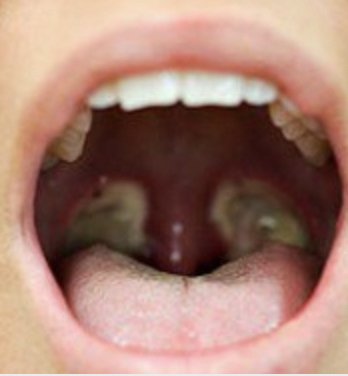
Tonsillectomy
What is a tonsillectomy?
A tonsillectomy is the removal of your tonsils. Your tonsils are located in the back of your throat. Tonsils are part of your body's immune system, but removing them does not increase your risk for infection.
Why is a tonsillectomy done?
There are several reasons for a tonsillectomy. The 2 most common reasons are:
If your tonsils are causing difficulty in breathing during sleep, often seen as frequent snoring.
If you have throat infections that keep coming back with the tonsils becoming infected and swollen. The name for tonsil infection is tonsillitis.
Who gets tonsillectomies?
Although it may seem like only children need to have their tonsils taken out, this is not true. Adults may also benefit from having their tonsils removed.
How is a tonsillectomy done?
A tonsillectomy can be performed in many ways. The surgery will be performed under general anesthesia while you are sleeping. The surgery usually takes less than 45 minutes. You will not feel any pain while the doctor is removing the tonsils. Typically all of the tonsils are removed, but some patients may benefit from a partial tonsillectomy. No method has been shown to be “the best” for all cases. A surgeon will use the technique that is best for the particular patient. The most common ways to take tonsils out include:
- Electrocautery: This method uses heat to remove the tonsils and stop any bleeding.
- Cold knife (steel) dissection: The tonsils will be removed with a scalpel. Bleeding is then stopped with sutures or with electrocautery (extreme heat).
- Harmonic scalpel: This method cuts and stops bleeding from the tonsils at the same time using ultrasonic vibrations.
- Other methods include the use of radiofrequency ablation techniques, and/or a microdebrider.
How long is the healing process?
Healing can be different for each person. It can take up to 2 weeks for pain and inflammation to go away. Pain is common and may get worse 3 to 4 days after the surgery. This pain is often worse in the morning and may last up to 2 weeks. Your doctor will design a medication plan to address your pain.
There may be discoloration where the tonsils were removed. When the area is healed completely – in about 3 to 4 weeks – the discoloration will be gone. For 2 weeks, activity should be limited. You should also plan on the patient resting at home for at least a week. There is a risk of bleeding after a tonsillectomy. That risk decreases after 10 days.
What should you eat after a tonsillectomy?
After the surgery, a key to recovery is making sure that you drink enough fluids. Soft and/or cool foods often are easiest for about two week, but you may feel free to add things to your diet as long as you can tolerate the foods. You should still avoid hard and spicy foods. Recommended items include:
Water or any other liquid
Ice cream
Smoothies
Yogurt
Puddings
Applesauce
Broth
Mashed potatoes
Scrambled eggs
Disclaimer: The information provided in this section is intended for general educational purposes only and should not be considered as medical advice. This content does not cover all possible scenarios and should not be used as a substitute for professional medical advice, diagnosis, or treatment. We strongly advise you to consult with your doctor or a qualified healthcare provider if you have any questions or concerns regarding your medical condition or treatment.
When should you contact your doctor after the tonsillectomy?
Bright red bleeding from your mouth
A fever higher than 39⁰C that does not get better with Paracetamol (such as Panadol®)
Uncontrolled pain
Becoming dehydrated


